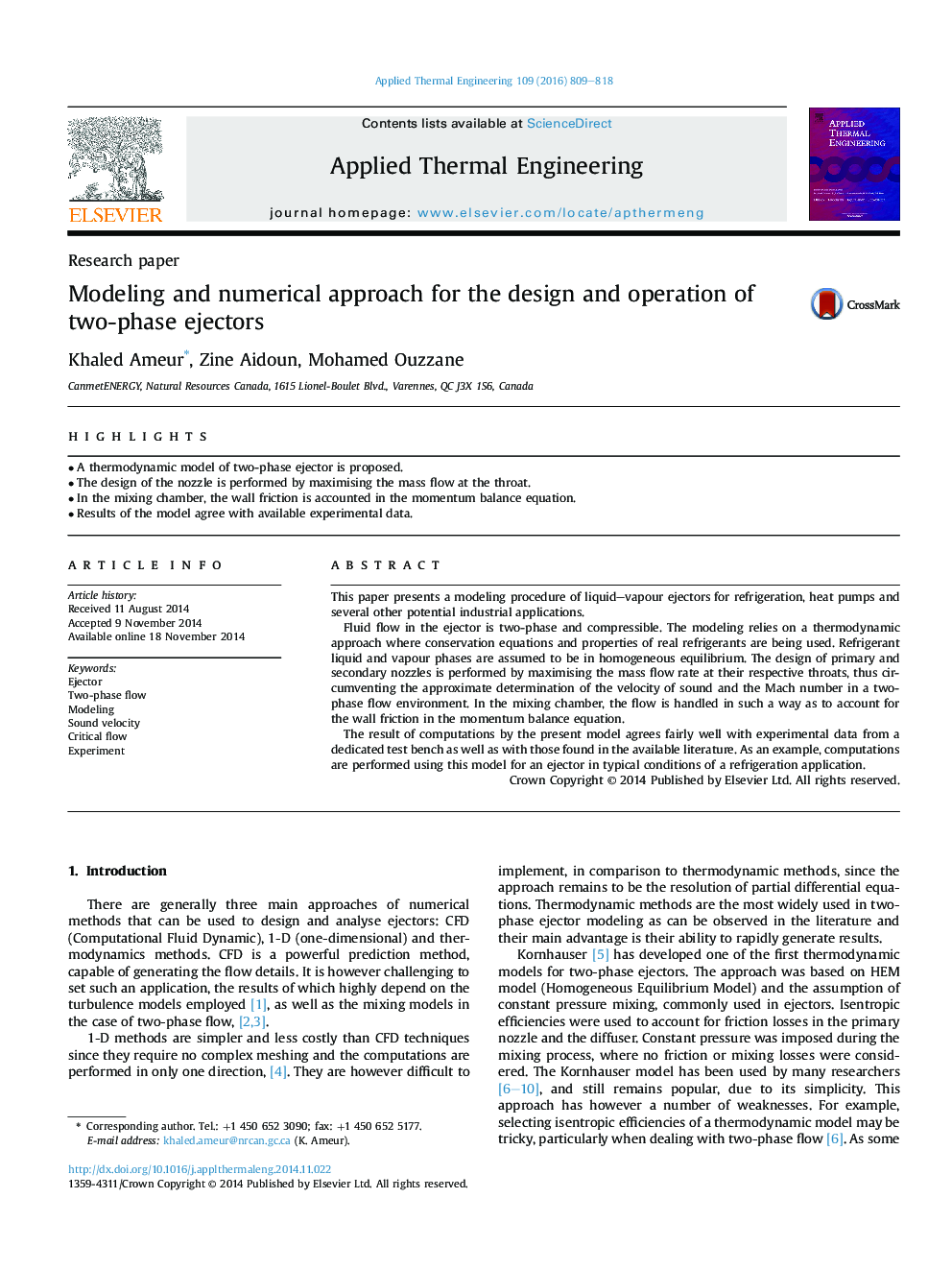| کد مقاله | کد نشریه | سال انتشار | مقاله انگلیسی | نسخه تمام متن |
|---|---|---|---|---|
| 6481207 | 1368130 | 2016 | 10 صفحه PDF | دانلود رایگان |
- A thermodynamic model of two-phase ejector is proposed.
- The design of the nozzle is performed by maximising the mass flow at the throat.
- In the mixing chamber, the wall friction is accounted in the momentum balance equation.
- Results of the model agree with available experimental data.
This paper presents a modeling procedure of liquid-vapour ejectors for refrigeration, heat pumps and several other potential industrial applications.Fluid flow in the ejector is two-phase and compressible. The modeling relies on a thermodynamic approach where conservation equations and properties of real refrigerants are being used. Refrigerant liquid and vapour phases are assumed to be in homogeneous equilibrium. The design of primary and secondary nozzles is performed by maximising the mass flow rate at their respective throats, thus circumventing the approximate determination of the velocity of sound and the Mach number in a two-phase flow environment. In the mixing chamber, the flow is handled in such a way as to account for the wall friction in the momentum balance equation.The result of computations by the present model agrees fairly well with experimental data from a dedicated test bench as well as with those found in the available literature. As an example, computations are performed using this model for an ejector in typical conditions of a refrigeration application.
Journal: Applied Thermal Engineering - Volume 109, Part A, 25 October 2016, Pages 809-818
